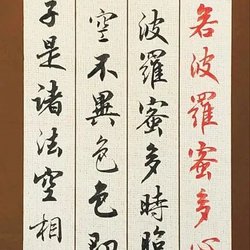
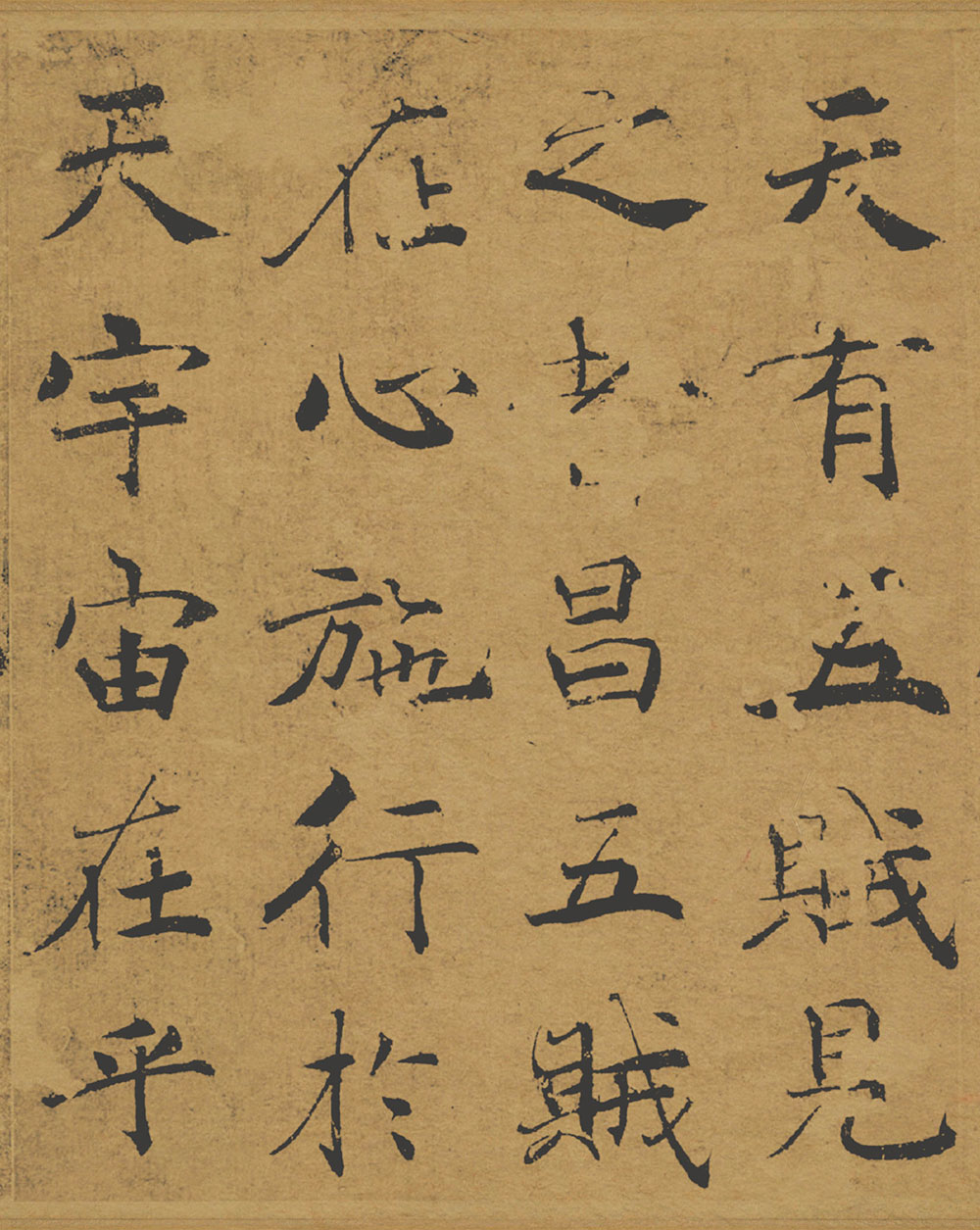



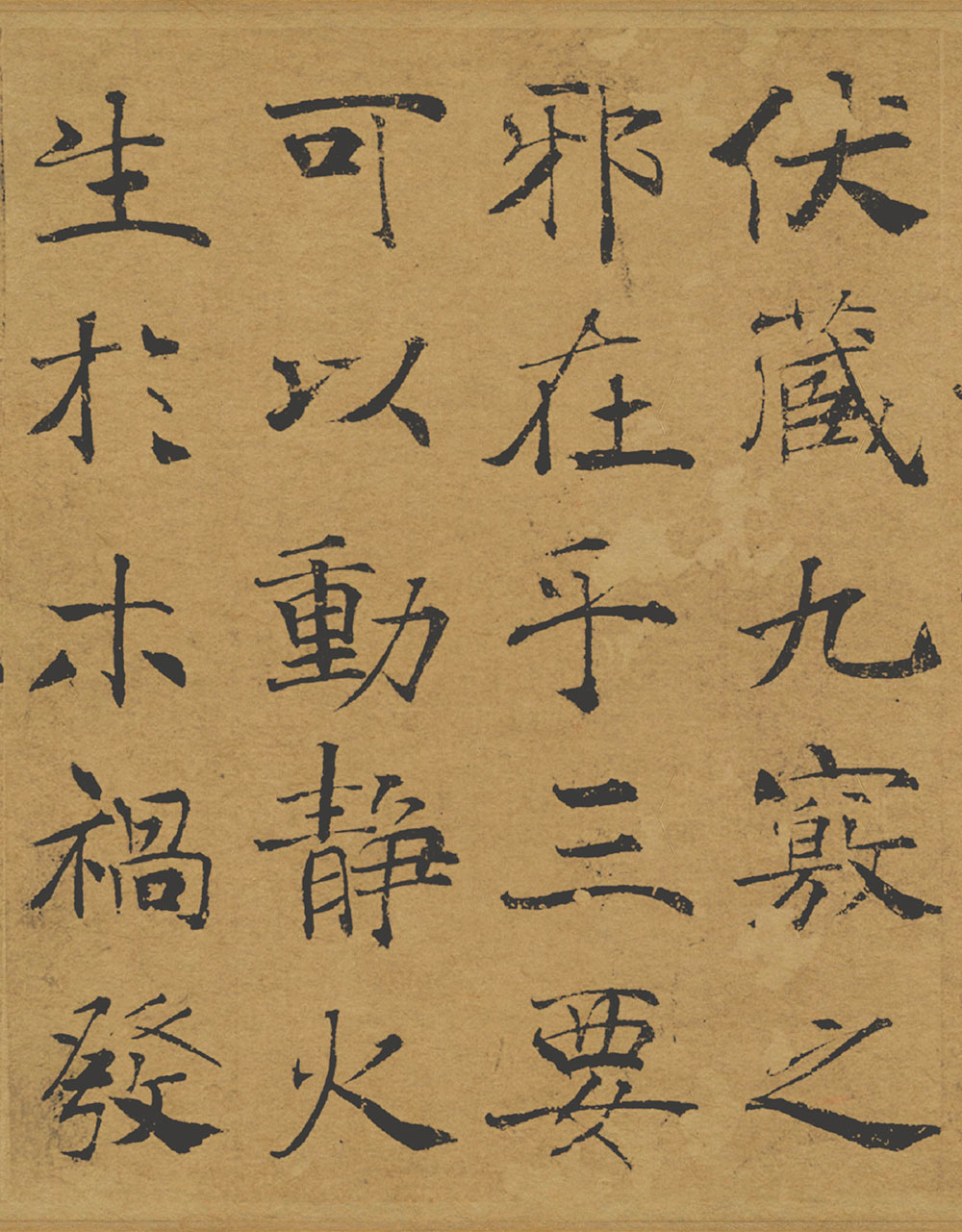

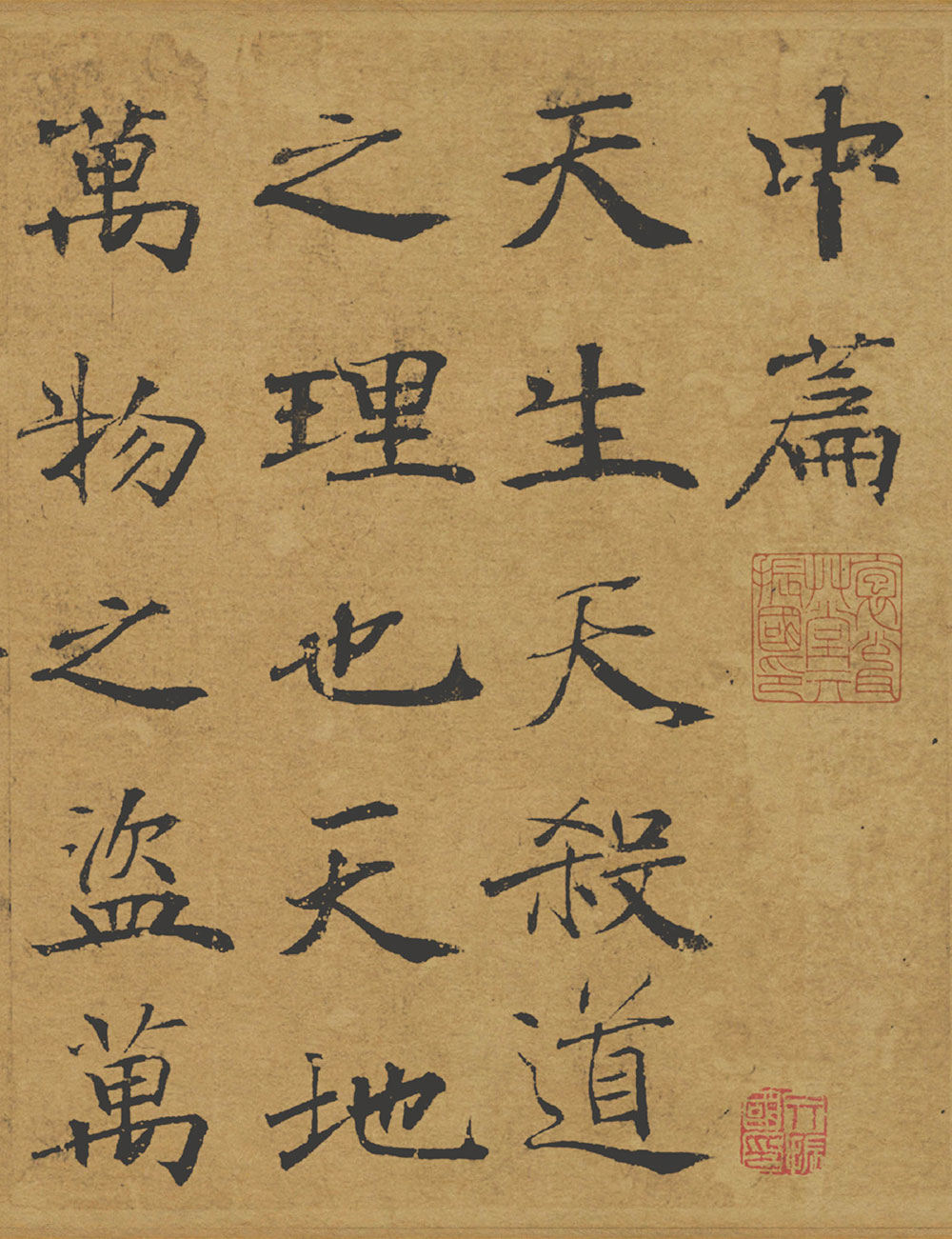
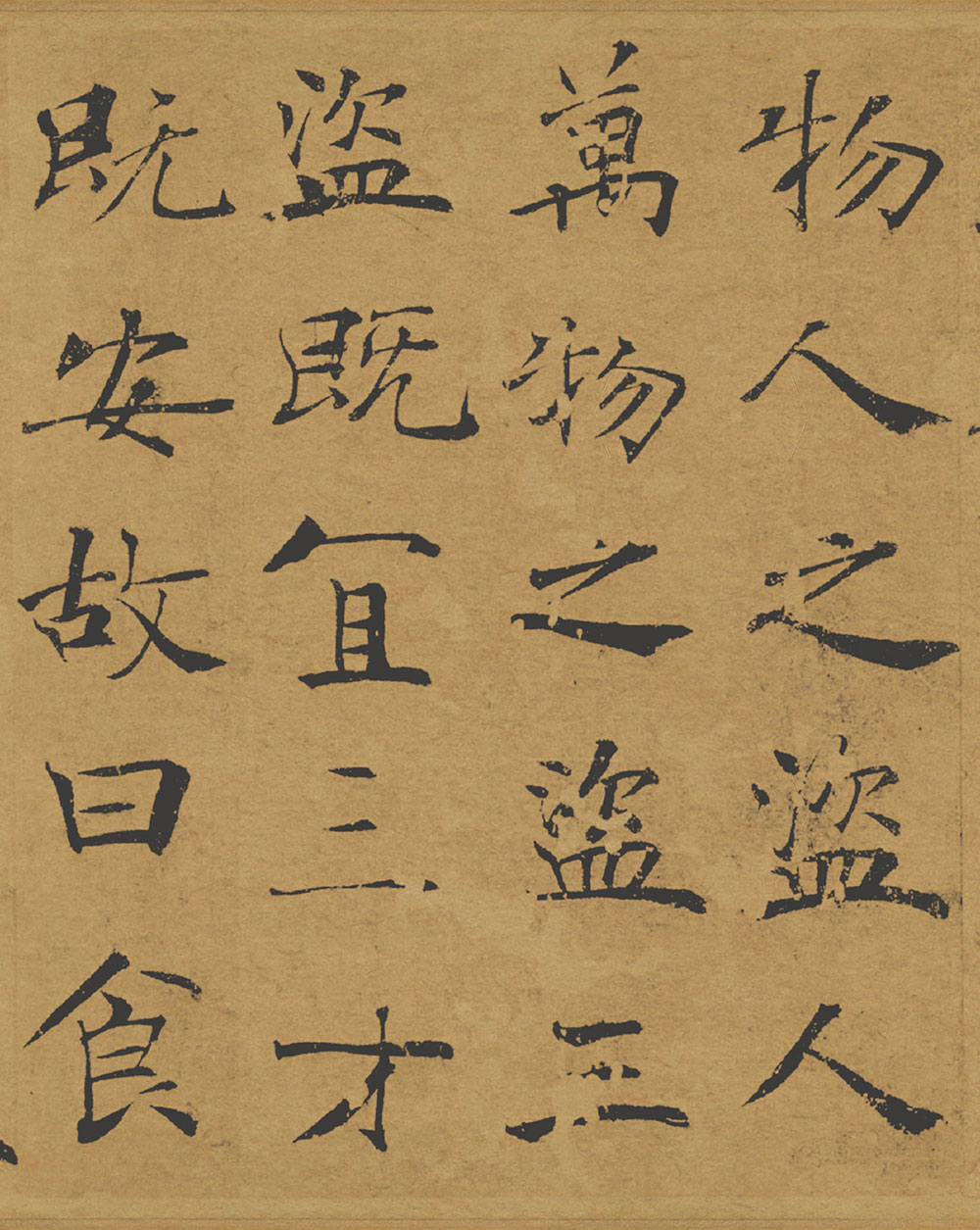
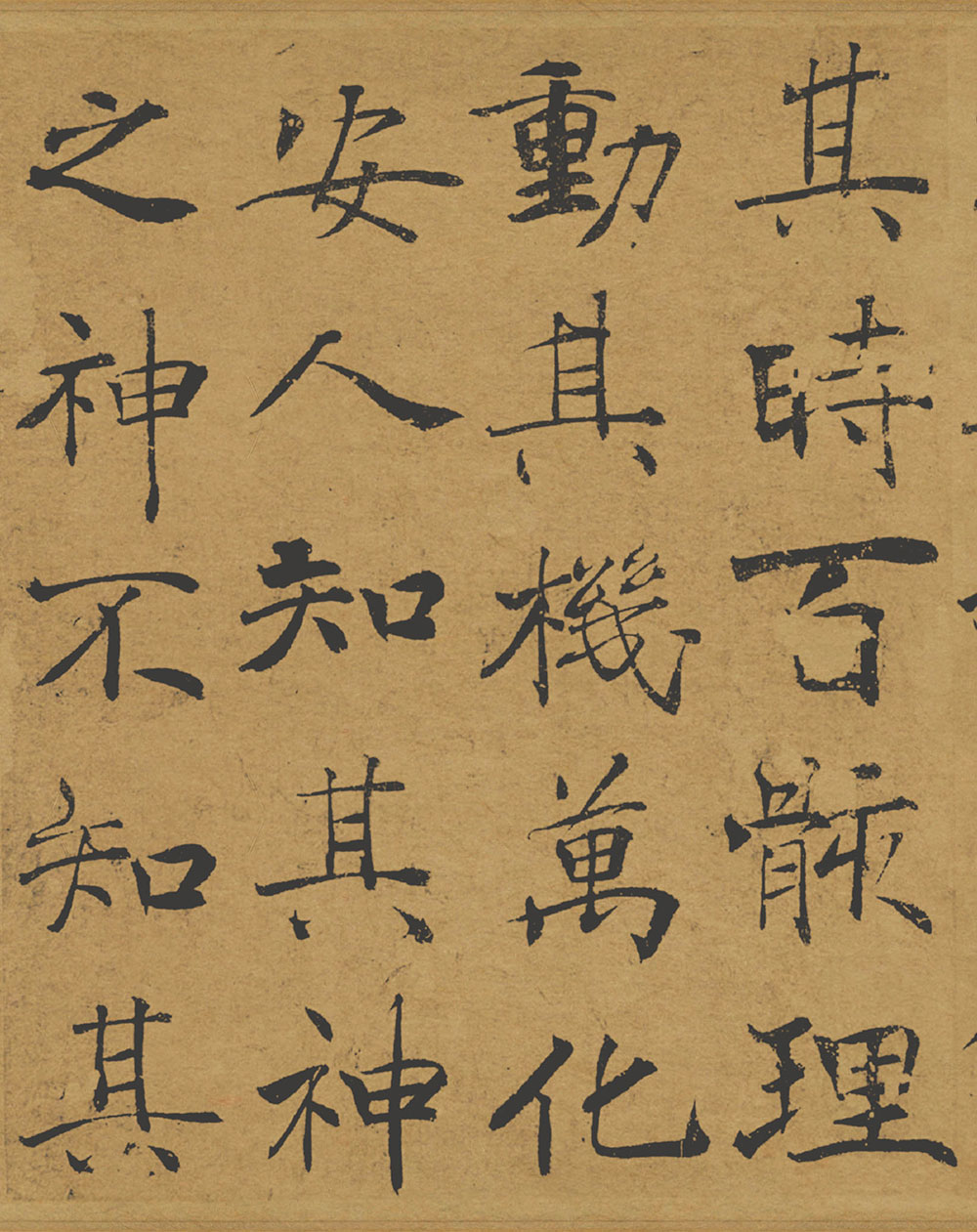

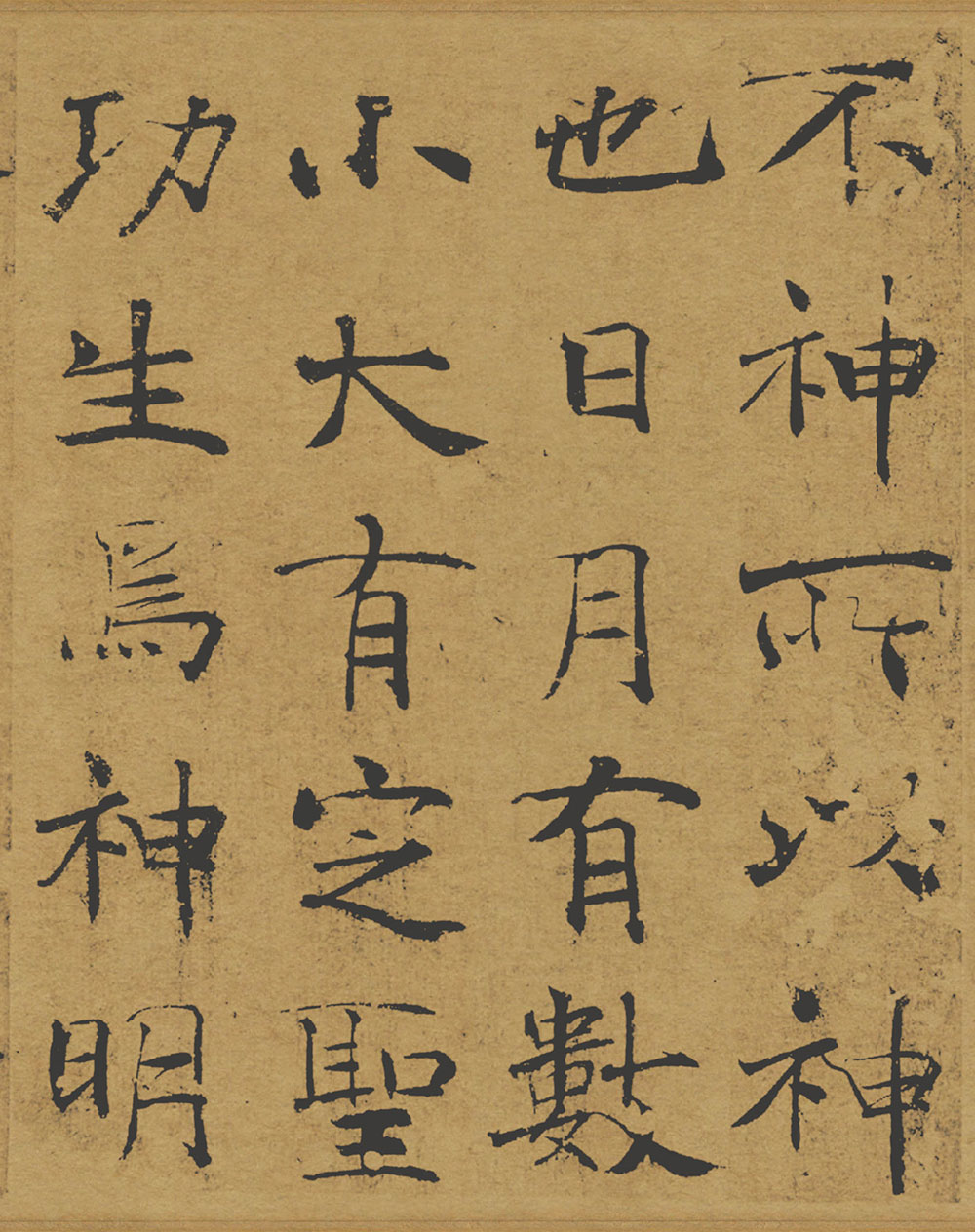
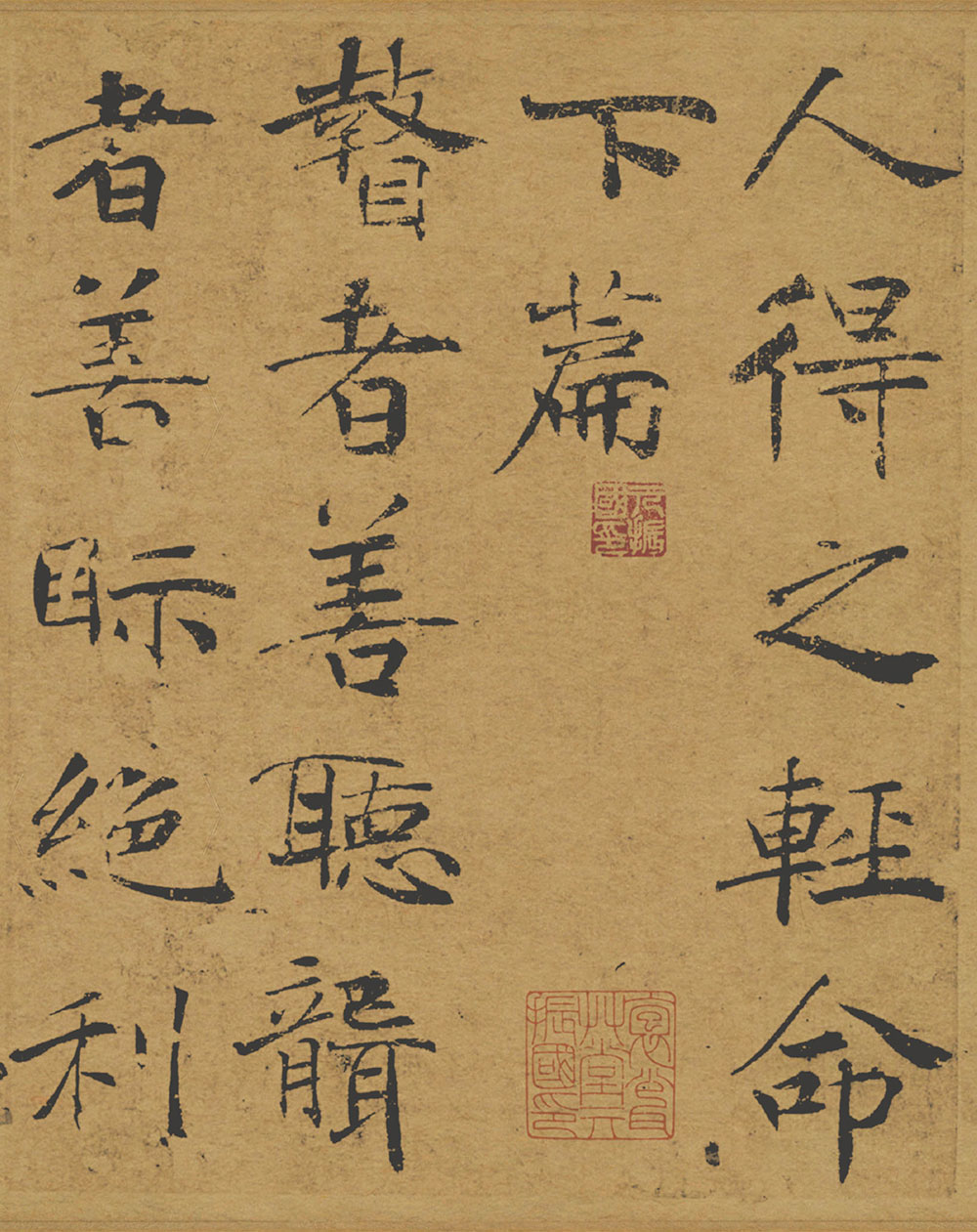










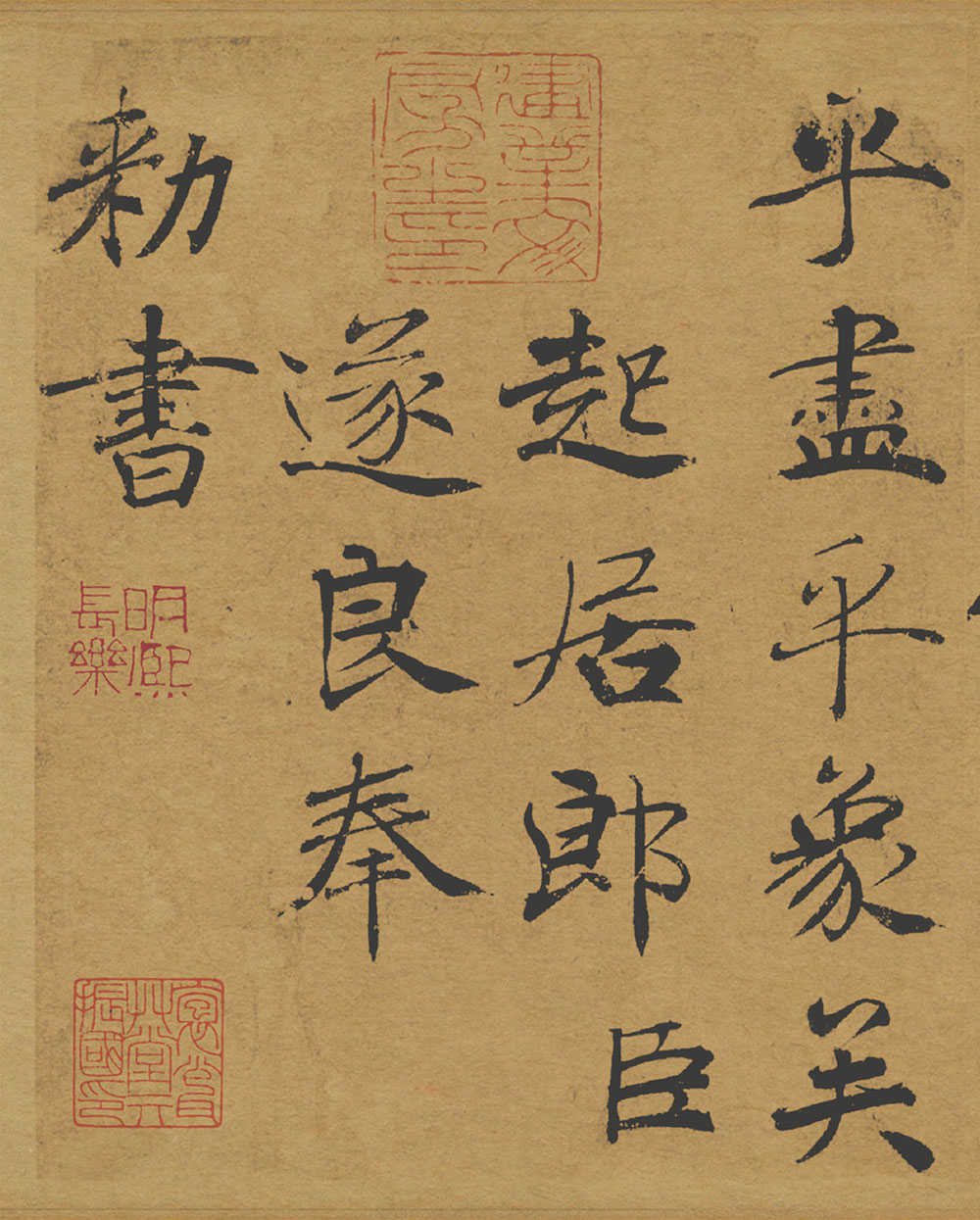
"Da Zi Yin Fu Jing" ink version, 96 lines, 461 words, passed down from the Tang Dynasty Chu Suiliang's book. Chu Suiliang's regular scripts handed down from generation to generation include "Preface to the Holy Religion of Yan Pagoda", "Preface to the Holy Religion of Tongzhou", "Stele of Fang Liang Gong", "Stele of Master Meng", "Stele of Yique Buddhist Niche", "Ni Kuan Zan", etc., among which " "Ni Kuan Zan" is an ink copy, and the rest are inscriptions on stele.
The "Yin Fu Jing", which is said to have been written by Chu Suiliang, has been circulated in the world in two versions: regular script and running script. The handwriting is very small, making it difficult to see the face of Mount Lu. This post is large and has a final title: "Liang Chen Chu Suiliang received the imperial edict." It is very likely that it is a forgery of Chu Shu in the Tang Dynasty. Even so, the large character "Yin Fu Jing" can be regarded as a masterpiece of calligraphy. This post not only has the characteristics of Chu style regular script, but is also very similar to the "Tang Dynasty writing classics". The ups and downs of the writing are mostly based on the writing style of writing classics, making the writing natural and simple. Yuan Yang Wujiu said: "The method of cursive script is ever-changing and has endless wonderful ideas. Now I have seen it in regular script in Chu Zhong, or commented on it. The writing is majestic and the momentum is ancient. It is one of them."
Chu Suiliang (596~659), also known as Dengshan. A native of Qiantang (now Hangzhou, Zhejiang). During the reign of Emperor Taizong of the Tang Dynasty, he was granted the title of Duke of Henan Province and was known as "Chu Henan" in the world. He is well versed in classics and history, and works in official script. After Yu Shinan's death, Emperor Taizong of the Tang Dynasty sighed: "Without Yu Shinan's death, there is no one with whom to discuss calligraphy!" Wei Zheng recommended Chu Suiliang and said: "Suiliang's penmanship is vigorous and powerful, and he is even better than Wang Yishao's calligraphy." Taizong treasured Wang Xizhi's calligraphy. , offering rewards of gold and silk for purchase. At that time, the kings of the world were scrambling to send letters to Beijing, and it was difficult to distinguish the authenticity. But Suiliang was able to evaluate and identify them, catalog them and store them in the inner palace. His calligraphy inherits the tradition of Wang Xi, with soft exterior and hard interior, round and round strokes, and is the most distinguished calligraphy in the world. Together with Ouyang Xun, Yu Shinan and Xue Ji, he is also known as one of the "Four Calligraphers of the Early Tang Dynasty". During the reign of Emperor Taizong, he served successively as a living minister and an admonishing official, and he reached the rank of Zhongshu Ling. Later, he was repeatedly demoted and died because he opposed Tang Gaozong's decision to make Wu Zetian his queen. The ink inscriptions passed down from generation to generation include "Ni Kuan Zan" and "Yin Fu Sutra", and the inscriptions on the tablets include "The Preface to the Holy Religion of the Wild Goose Pagoda", "The Stele of Yique Buddhist Niche", "The Stele of Fang Xuanling", etc.
"Book Review of the Tang Dynasty" said that his calligraphy is: "Gold is born in the words, jade is moist in the lines, the rules are gentle and elegant, and the beauty is multifaceted." The "Preface to the Holy Religion of the Wild Goose Pagoda" written by him is the most unique. In this stele, he integrated Yu and Ou Fa into one, both of which were natural. From the point of view of charm, he directly catches up with Wang Yishao, but his brushwork, lettering, roundness, thinness and strength are all Chu's.
"Da Zi Yin Fu Jing" is slightly closer to "Yanta Shengjiao Preface", the writing style is extremely flexible, the stipples, turns, and strokes have the meaning of running script, and some of the heavy strokes also have the meaning of official script, and the light and heavy are well combined with the virtual and the real. The end of this volume is "Book of Imperial Orders by Suiliang, the Minister of Living Life". Experts believe that when Chu was the Minister of Living Life, his calligraphy style should be like that of "Yique Buddhist Niche Stele", but the current "Da Zi Yin Fu Jing" is the style of Chu's later years. Expert analysis makes sense. However, this book is a fake and was written by a master who studied Chu at that time. The calligraphy is of a very high level and it is an important model for learning regular script.










